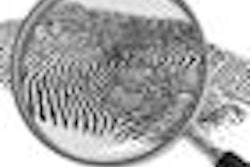Tiny gold particles can help doctors detect tumor cells circulating in the blood of patients with head and neck cancer, researchers from Emory University and Georgia Tech report (Cancer Research, January 6, 2011).
The detection of circulating tumor cells (CTCs) is an emerging technique that can allow oncologists to monitor cancer patients for metastasis or evaluate the progress of their treatment, the researchers noted. The gold particles, which are embedded with dyes allowing their detection by laser spectroscopy, could enhance this technique's specificity by reducing the number of false positives.
The Emory and Georgia Tech researchers demonstrated that polymer-coated and dye-studded gold particles, directly linked to a growth factor peptide rather than an antibody, can detect circulating tumor cells in the blood of patients with head and neck cancer.
"The key technological advance here is our finding that polymer-coated gold nanoparticles that are conjugated with low molecular weight peptides such as EGF [epithelial growth factor) are much less sticky than particles conjugated to whole antibodies," said Shuming Nie, PhD, a professor in the Wallace H. Coulter Department of Biomedical Engineering at Georgia Tech and Emory University. "This effect has led to a major improvement in discriminating tumor cells from nontumor cells in the blood."
The particles are linked to EGF, whose counterpart epithelial growth factor receptor (EGFR) is overproduced on the surfaces of several types of tumor cells, he added.
Upon laser illumination, the particles display a sharp fingerprint-like pattern that is specific to the dye, because the gold enhances the signal coming from the dyes. This suggests that several types of nanoparticles could be combined to gain more information about the growth characteristics of the tumor cells. In addition, measuring CTC levels may be sensitive enough to distinguish patients with localized disease from those with metastatic disease.
In collaboration with oncologists at the Winship Cancer Institute, Nie and his colleagues used nanoparticles to test for CTCs in blood samples from 19 patients with head and neck cancer. Of these patients, 17 had positive signals for CTCs in their blood. The two with low signals were verified to have no circulating cells by a different technique.
"Although the results have not been compared or validated with current CTC detection methods, our 'one-tube' SERS [surface enhanced Raman spectroscopy] technology could be faster and lower in costs than other detection methods," said Dong Moon Shin, MD, a professor of hematology and oncology and otolaryngology and associate director of academic development at the Winship Cancer Institute. "We need to validate this pilot study by continuing with larger groups of patients and comparing with other tests."



















